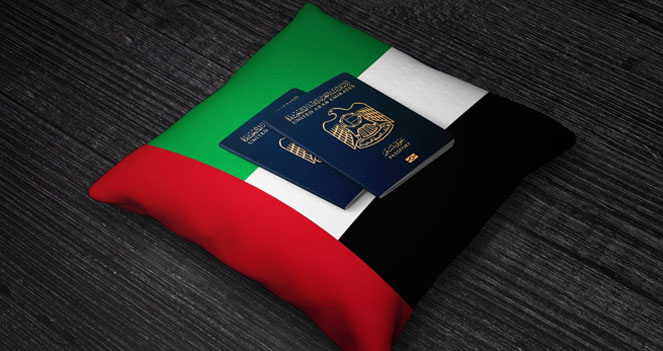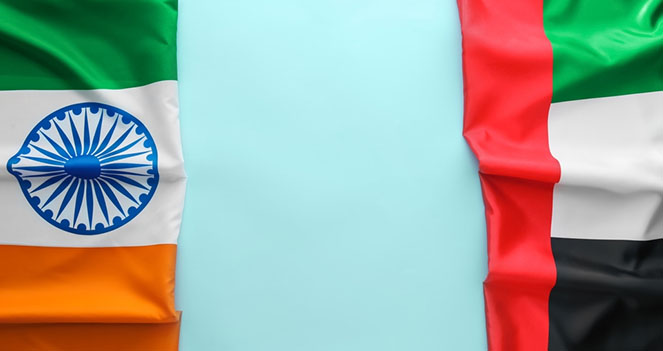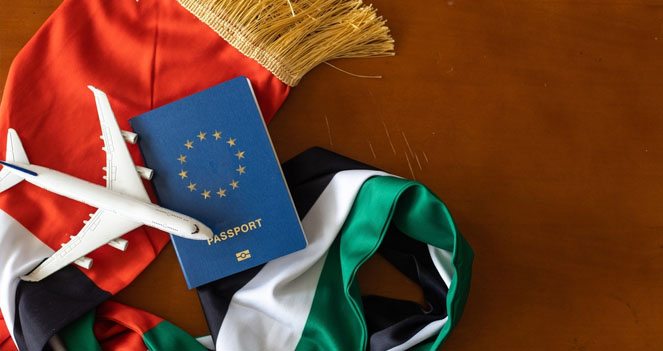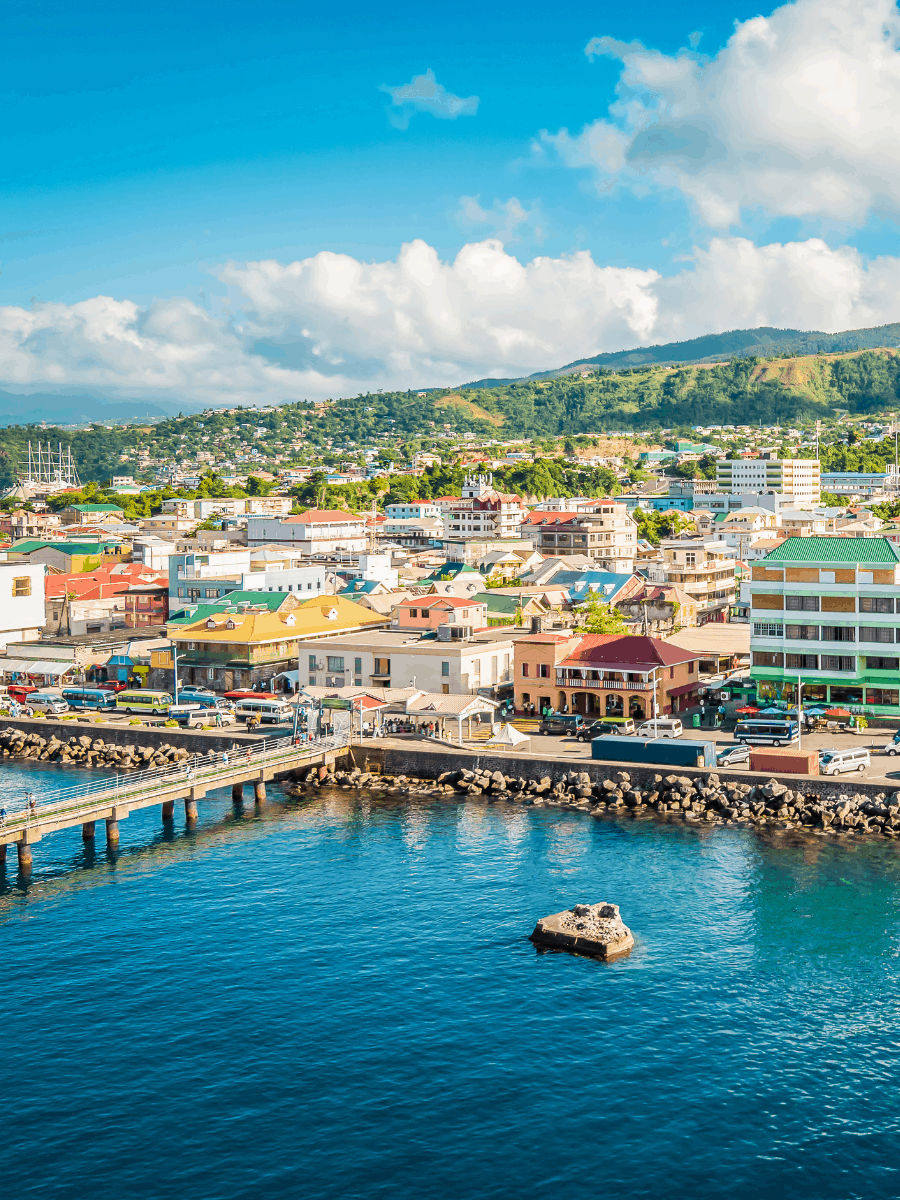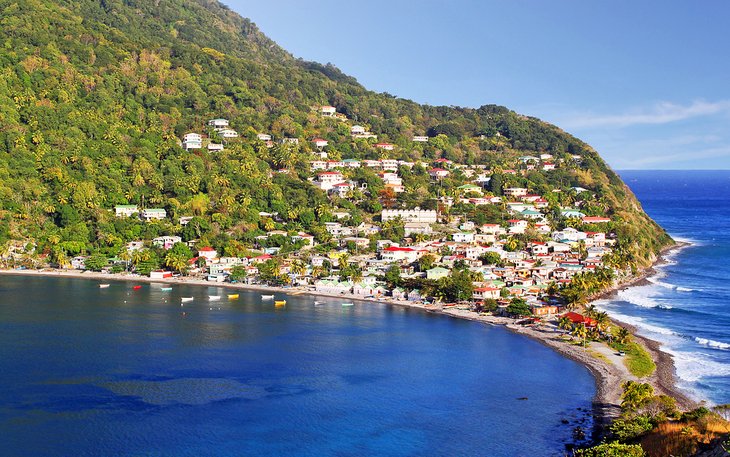
Dominica is an island nation in the eastern Caribbean Sea and part of the Lesser Antilles. It is situated between Martinique to the south and the French islands of Guadeloupe and Marie-Galante to the north. Since gaining its independence in 1978, the nation has belonged to the Commonwealth.
The island is 47 kilometers (29 miles) long and up to 16 miles wide (26 km). Roseau is the country's capital and main port. Generations of nature enthusiasts have been awed by Dominica's outstanding natural beauty, particularly its breathtaking mountainous geography.
The island was formed by volcanic activity. There are several active volcanoes in Dominica. However, eruptions are seldom. Hot springs and fumaroles are further indicators of geothermal activity. Boiling Lake is located in the south at the height of 2,300 feet (700 meters); Due to the pressure of releasing gases, its waters are frequently raised 3 feet (1 metre) above usual. Rich volcanic and alluvial soils cover the island. There are many rivers, none of which can be navigated.
Dominica has a lovely climate, especially from December to March when it's cooler. The typical summer high temperature is 90 °F (32 °C). The typical high temperature in winter is slightly lower, ranging from 84 to 86 °F (29 to 30 °C). February through May is the dry season, while June through October is the rainy season when hurricanes are most prone to occur (tropical cyclones). Rainfall varies, with the mountainous interior seeing the heaviest amounts. Although the amount of rainfall on the coast ranges from about 60 inches (1,500 mm) to 145 inches (3,700 mm), it can exceed 250 inches in the highlands (6,350 mm).


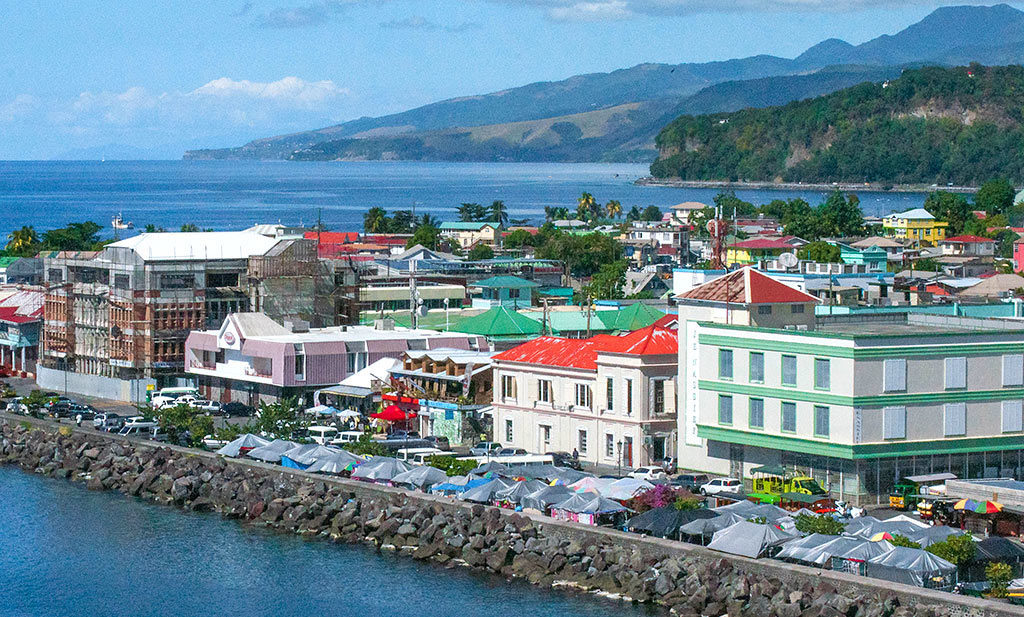
 Dubai
Dubai  Qatar
Qatar  Kuwait
Kuwait Oman
Oman Yemen
Yemen Saudi Arabia
Saudi Arabia  Bahrain
Bahrain Egypt
Egypt Turkey
Turkey Romania
Romania  Russia
Russia Ukraine
Ukraine Schengen
Schengen  United Kingdom
United Kingdom  Canada
Canada USA
USA Singapore
Singapore Malaysia
Malaysia  Japan
Japan Thailand
Thailand  Mexico
Mexico Hong Kong
Hong Kong  Philipines
Philipines Vietnam
Vietnam Armenia
Armenia kazakhstan
kazakhstan  Australia
Australia New Zealand
New Zealand South Korea
South Korea South Africa
South Africa Uganda
Uganda Ghana
Ghana Kenya
Kenya Sudan
Sudan Morocco
Morocco Israel
Israel Syria
Syria Lebanon
Lebanon  Iran
Iran Iraq
Iraq Azerbaijan
Azerbaijan  Austria
Austria  Belgium
Belgium The czech republic
The czech republic Denmark
Denmark Estonia
Estonia Finland
Finland France
France Germany
Germany Greece
Greece Hungary
Hungary  Iceland
Iceland Italy
Italy Latvia
Latvia Liechtenstein
Liechtenstein Lithuania
Lithuania Luxembourg
Luxembourg Malta
Malta the Netherlands
the Netherlands Norway
Norway Poland
Poland Portugal
Portugal Slovakia
Slovakia Slovenia
Slovenia Spain
Spain Sweden
Sweden Switzerland
Switzerland Afghanistan
Afghanistan Albania
Albania  Algeria
Algeria 
